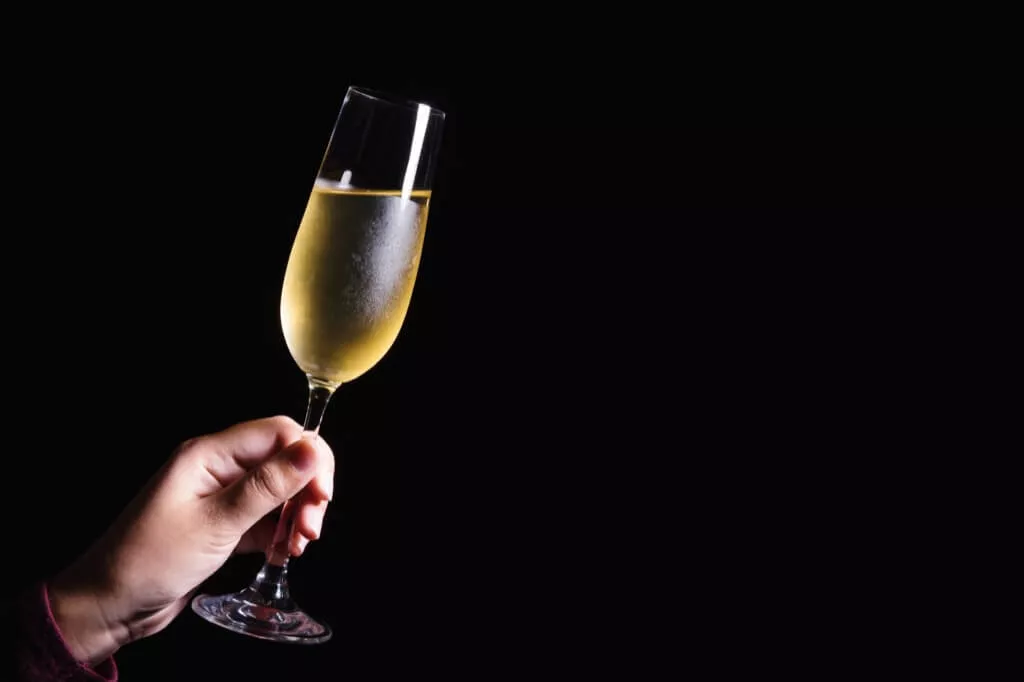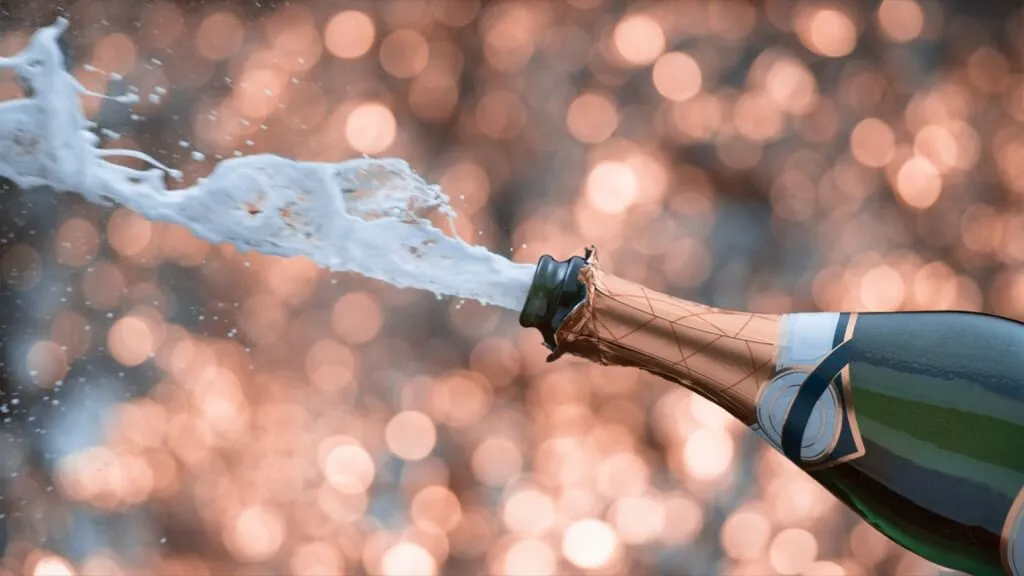When exposed to air, the carbonation in any carbonated drink will eventually disappear. Even re-capping the drink will only slow it down, not stop it, as everyone who has ever screwed the top back on a soda bottle knows. You can’t return the genie or the bubbles to their original container after they’ve been released. This might not seem important when discussing a cheap soft drink, but when you’ve spent a pretty penny on a bottle of capital-c Champagne, you’ll want to make sure you get the most out of your money.
The exact amount of time it takes for sparkling wines like Champagne to lose their carbonation is a topic of debate among experts in the wine business. Although it will not taste the same after five days in the fridge as it did when you opened it, the more hopeful ones will give you up to five days for wine stored in the fridge. On the other hand, many insist that you should drink the entire bottle as soon as the cork is popped. According to some experts, the longevity of Champagne can vary from bottle to bottle due to factors such as the age of the wine and the initial pressure inside the bottle.
The Case for Up to Five Days
On the more optimistic side of the debate, some wine experts assert that Champagne can maintain its integrity for up to five days after opening if properly stored in the refrigerator. The key here is the term “properly stored,” which typically involves resealing the bottle with a Champagne stopper designed to minimize the escape of carbon dioxide, the gas responsible for the bubbles in Champagne.
Supporters of this viewpoint argue that while the sensory profile of the Champagne—its aroma and palate—may shift slightly over the days, it does not abruptly lose its character after opening. They suggest that the evolution of the wine can be part of the enjoyment, offering different nuances of flavors and effervescence each day. This position is often backed by the fact that many modern Champagnes are crafted to be robust, with a strong initial carbonation that can withstand gradual degradation over a few days.
The Immediate Consumption Argument
Conversely, many purists believe that Champagne should be consumed immediately after opening. The argument here is centered on the essence of what makes Champagne unique: its lively bubbles and crisp, fresh flavors. According to these experts, once the bottle is opened and the initial pressure released, the wine begins to oxidize and lose its carbonation rapidly.
This side of the debate often highlights that the intricate balance of flavors and the delicate nature of the bubbles are at their peak immediately after opening. Any delay in consumption, they argue, leads to a flat and less expressive Champagne, which undermines the experience that the winemakers intended.
Variability Factors
Adding complexity to this debate is the acknowledgment that not all Champagnes are the same. Factors such as the age of the wine and the initial pressure in the bottle play significant roles in how well Champagne holds up after being opened. Older vintages might not retain their sparkle as long as younger ones due to less vigorous carbonation. Similarly, the method of production and the quality of the sealing cork or cap can affect how tightly the carbon dioxide is trapped inside the bottle.
Moreover, the temperature at which the Champagne is stored after opening can greatly influence its longevity. Colder temperatures slow down the rate of carbonation loss and oxidation, thereby preserving the bubbles and freshness for a longer period.
The debate over how long Champagne retains its charm after opening is nuanced and depends on various factors, including personal taste preferences and the specific characteristics of the bottle in question. While some may find pleasure in observing the subtle changes in a Champagne that has been open for a few days, others might strictly adhere to the practice of drinking it at its freshest to experience the optimal expression of its qualities.
Ultimately, the decision on how quickly to consume Champagne post-opening may best be guided by one’s sensory appreciation, the occasion, and perhaps the willingness to experiment and discover how the character of the Champagne evolves—whether that be over a matter of hours or days.
How to deal with a flat Champagne bottle

Because life is full of surprises, you might find yourself popping open a bottle of sparkling wine at an inopportune moment, leaving more than anticipated when the gathering winds down. Should this happen, cling to the hope that your Champagne retains some effervescence for up to five days in the fridge, as the colder environment helps preserve more CO2, keeping those precious bubbles a bit longer.
If the original cork—those stout, traditional Champagne stoppers—proves a challenge to reinsert without a good deal of whittling, there are other ways to temporarily seal the fate of your fizz. Wrapping the bottle’s top tightly with plastic wrap or foil can serve as a makeshift closure, though it’s hardly an ideal solution for preserving optimum carbonation. And while you might be tempted to reuse a plastic cork from a less expensive sparkling wine, resist the urge. These are not designed to withstand the internal pressure that might build up once resealed, risking a potentially startling pop in your refrigerator.
Yet, let’s not despair if your Champagne does eventually go flat. The world of culinary delights offers a sanctuary for your less-than-bubbly bubbly. Flat Champagne opens the door to a realm of creative repurposing that can still capture the essence of its flavor. For instance, blending it into a wine slushie might just be a refreshing twist, turning a potential disappointment into a delightful treat. The vigorous action of the blender will anyway dispel what remains of the carbonation, but the flavor will remain.
In your kitchen, flat Champagne transforms into a versatile ingredient. Imagine baking a delicate pink Champagne cake, its subtle flavors teasing out something truly special in the confection. Or perhaps whipping up a rich Champagne cream sauce to drizzle over a savory dish, adding a touch of elegance. Consider the zest it could bring to a plate of oysters with a Champagne mignonette or the flair it could add to fried shrimp doused generously in the wine. The possibilities are virtually endless, ensuring that not a single drop of your cherished Champagne goes to waste.
Keep the Bubbles Bubbling
Ensuring that your Champagne retains its delightful effervescence can enhance your drinking experience and keep the celebration going. Here are some practical tips to help you prevent your bubbly from going flat in the first place:
- Chill Before Popping: Always ensure your Champagne is well-chilled before opening. A chilled bottle keeps the CO2 in the solution better, reducing the rate at which the gas escapes. Aim to keep your Champagne between 40°F and 45°F for optimal results.
- Open with Care: When you open your Champagne, do so gently to minimize the initial rush of gas escaping. Hold the cork and twist the bottle — not the cork — to control the release of pressure slowly.
- Use a Champagne Stopper: Invest in a good quality Champagne stopper. These are specifically designed to reseal your Champagne bottle effectively, keeping the bubbles in and the air out. Make sure the stopper provides a tight seal to maintain the internal pressure needed to preserve the bubbles.
- Keep It Upright: Store your opened Champagne bottle upright in the refrigerator. This minimizes the surface area of wine in contact with air, slowing down the oxidation process and the loss of carbonation.
- Minimize Exposure to Air: Every time you open your Champagne bottle, you let in air which can speed up the oxidation process. Try to minimize how often you open the bottle by planning when you’ll pour glasses and keeping it sealed as much as possible in between.
- Serve in Flutes: Pour your Champagne into narrow Champagne flutes rather than wide-brimmed glasses. The flute’s design helps preserve the bubbles longer by reducing the surface area at the top of the glass, slowing down the escape of the carbonation.
By following these tips, you can maximize the life of your Champagne’s effervescence and enjoy its vibrant, bubbly character for as long as possible.

